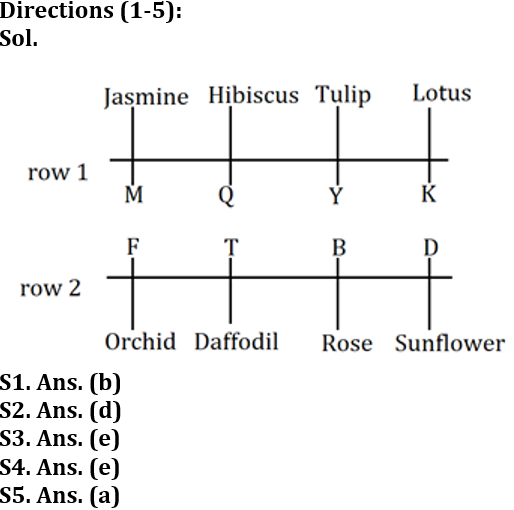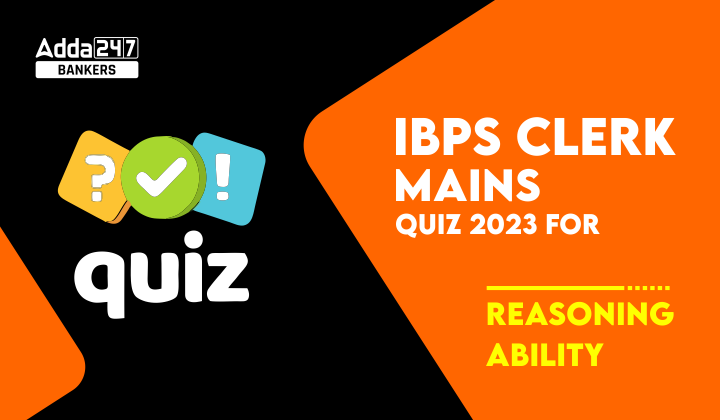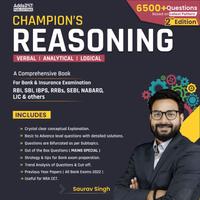Directions (1-5): Study the following information carefully and answer the questions given below:
Eight persons M, F, T, B, K, Y, Q and D are sitting in two parallel rows facing each other. Each of them likes different flowers i.e., Jasmine, Hibiscus, Tulip, Lotus, Orchid, Daffodil, Rose and Sunflower but not necessarily in the same order. Persons sitting in row 1 are facing south and the persons sitting in row 2 are facing north.
Two persons are sitting between M who does not like Orchid and the one who likes Lotus. No one is sitting to the left of F who is not facing south. B who is not sitting in row 1 is not an immediate neighbor of F. D who is sitting at one of the extreme ends does not face the one who likes Hibiscus. The one who likes Rose faces the immediate neighbor of the one who likes Lotus. Q who likes Hibiscus is sitting second to the right of K who does not like Rose. The one who like Daffodil is sitting second to the left of the one who likes Sunflower. Y is not siting in row 2. The one who likes Orchid faces the one who likes Jasmine. T does not face Y.
Q1. Who among the following likes Tulip?
(a) M
(b) Y
(c) K
(d) B
(e) T
Q2. Who is sitting second to the right of the one who faces B?
(a) Q
(b) K
(c) D
(d) M
(e) None of these
Q3. Four of the following five are alike in a certain way and hence form a group, which of the following does not belong to the group?
(a) M-Rose
(b) Q-Orchid
(c) Y-Sunflower
(d) B-Jasmine
(e) T-Hibiscus
Q4. Number of persons sitting to the right of Y is the same as the number of persons sitting to the left of _________?
(a) Q
(b) T
(c) B
(d) D
(e) Both (a) and (c)
Q5. K likes which flower?
(a) Lotus
(b) Jasmine
(c) Orchid
(d) Tulip
(e) Sunflower
Q6. Which of the following symbols should replace the sign (%) and (&) respectively in the given expression in order to make the expression ‘U>D’ and ‘J≥G’ definitely true?
A>U≥N%C>G&D≤B=K≤J>I
(a) =, ≥
(b) =, >
(c) ≤, =
(d) =,=
(e) =, <
Q7. Which of the following will be definitely not true if the given expression T<C>X>L≥I≥O<P≤S<M≥U=W is definitely true?
(a) M>O
(b) C>I
(c) X≥O
(d) M>P
(e) W≤M
Q8. How many words can be formed from the 1st, 6th, 7th and 9th letter of a word ‘Secretary’ by using each letter once in the word?
(a) Two
(b) One
(c) None
(d) Three
(e) More than three
Directions (9-10): Each of the following questions consists of a statement followed by two arguments I and II.
Give answer
(a) If only argument I is strong
(b) If only argument II is strong
(c) If either I or II is strong
(d) If neither I nor II is strong
(e) If both I and II are strong.
Q9. Statement: Should India become a permanent member of UN’s Security Council?
Arguments: I. Yes. India has emerged as a country which loves peace and amity.
II. No. Let us first solve problems of our own people like poverty, malnutrition.
Q10. Statement: Should the persons below the age of 18 years be allowed to join armed forces?
Arguments: I. No. Persons below the age of 18 do not attain both physical and mental maturity to shoulder such burden.
II. Yes, this can make our army more powerful.
Solutions

S8. Ans. (b)
Sol. STAY
S9. Ans. (a)
Sol. A peace – loving nation like India can well join an international forum which seeks to bring different nations on friendly terms with each other. So, argument I holds strong. Argument II highlights a different aspect. The internal problems of a nation should not debar it from strengthening international ties. So, argument II is vague.
S10. Ans. (a)
Sol. The armed forces must consist of physically strong and mentally mature individuals to take care of defense properly. So, argument I holds strong. Clearly, argument II holds no relevance.





 GA Capsule for SBI Clerk Mains 2025, Dow...
GA Capsule for SBI Clerk Mains 2025, Dow...
 The Hindu Review October 2022: Download ...
The Hindu Review October 2022: Download ...
 SBI PO Mains Preparation Strategy 2025, ...
SBI PO Mains Preparation Strategy 2025, ...





